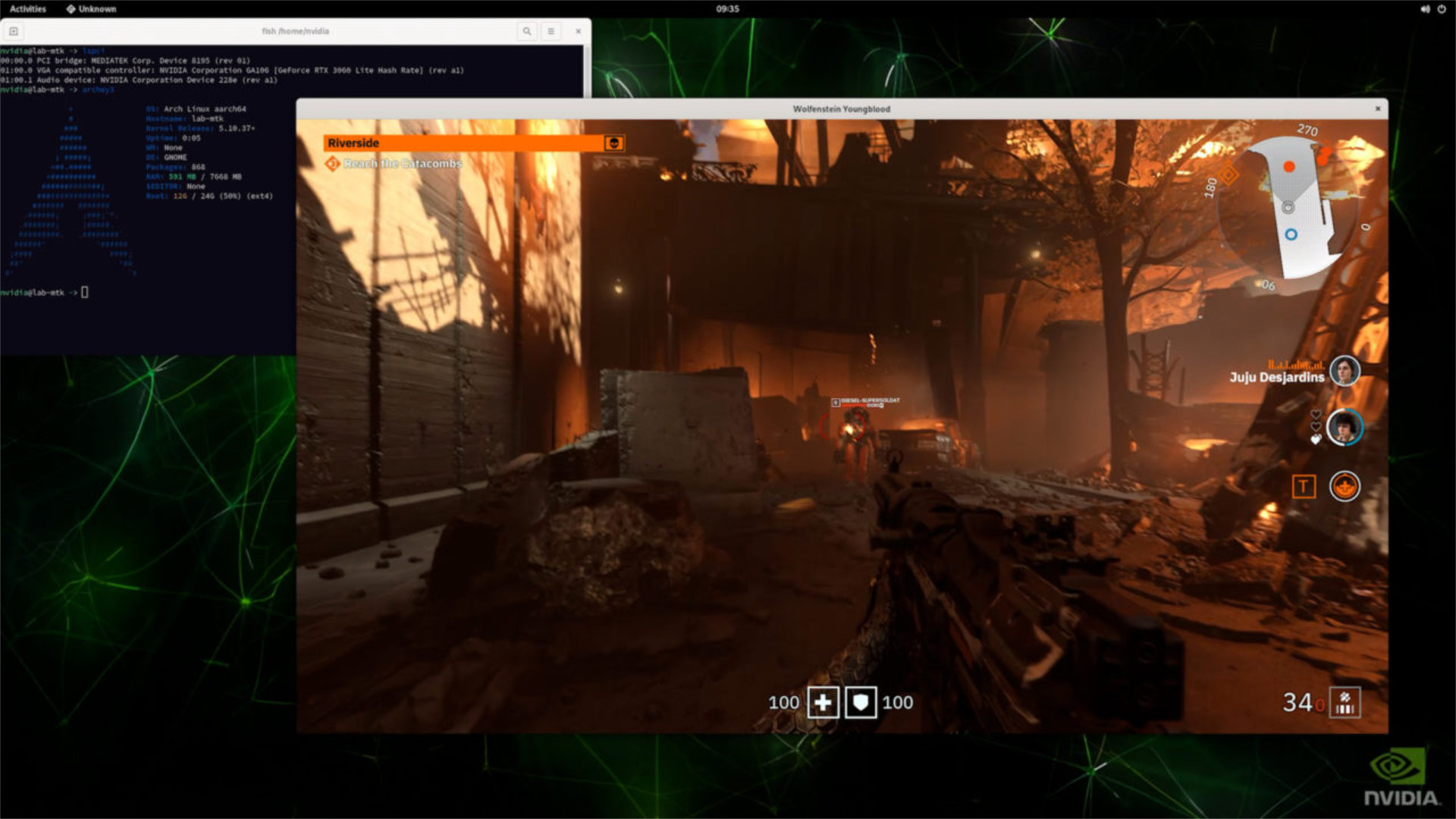
Nvidia will make ray-tracing and DLSS compatible with the ARM architecture. Behind this somewhat cryptic vocabulary actually hides good news for the world of video games, especially on mobile.
On June 19, 2021, on the very first day of the Game Developers Conference, Nvidia presented a novelty that should delight gamers of all stripes. The graphics card maker has announced that its two flagship technologies, ray-tracing and DLSS, are now compatible with the ARM platform.
Why is this important?
To understand why the news is encouraging, it is necessary to return for a moment to the operation of Nvidia technologies and to what the ARM platform is. Ray-tracing like DLSS are two tools developed by Nvidia which aim to improve the graphics of video games. The first allows better light management and the second improves image quality. The ARM platform is a new computer architecture used by our smartphones, tablets, new Apple computers and some Windows computers.

By making its technologies available on ARM devices, Nvidia will therefore enable new generation computers to benefit from better graphics. The idea of the company is to show how these devices ” more energy efficient “Can also take advantage of” cutting edge graphics “. But beyond PCs, this announcement is also encouraging for mobile gamers.
Possible improvements for mobile gaming
The ARM architecture, in addition to arriving on new computers, is the one found everywhere in our mobile devices. Both Android and iOS smartphones are based on this platform, just like most tablets on the market. By making its technologies compatible with this new system architecture, Nvidia is giving itself the means to significantly improve the gaming experience on mobile. Such an innovation would make smartphone games more beautiful, more immersive and more realistic.
So far, the company has only shown PC gaming demos. However, it’s a safe bet that these improvements will arrive quickly on mobile too, since the two systems are more alike than ever. We can also see a discreet nod to the mobile world in Nvidia’s announcement. The company is indeed pleased that its technologies are arriving on the system architecture ” most used in the world “. ARM is not yet the majority system architecture on computers, the company is probably referring to smartphones and tablets here.
Adjustments will be necessary
That doesn’t mean, however, that all smartphone games will enjoy stunning graphics with the snap of a finger. It will first be necessary for the development teams to seize the tool and for the equipment to follow. Ray-tracing requires a certain power that today’s smartphones cannot necessarily offer. On the other hand, DLSS is a more versatile and less resource-intensive technology that could more easily accommodate the constraints of the mobile world.
The technology certainly needs dedicated chips, but processors like the Apple Silicon M1, which equips the latest iPad Pro, carry components similar to those required by NVIDIA for the proper functioning of this technology. Hope is therefore permitted.



